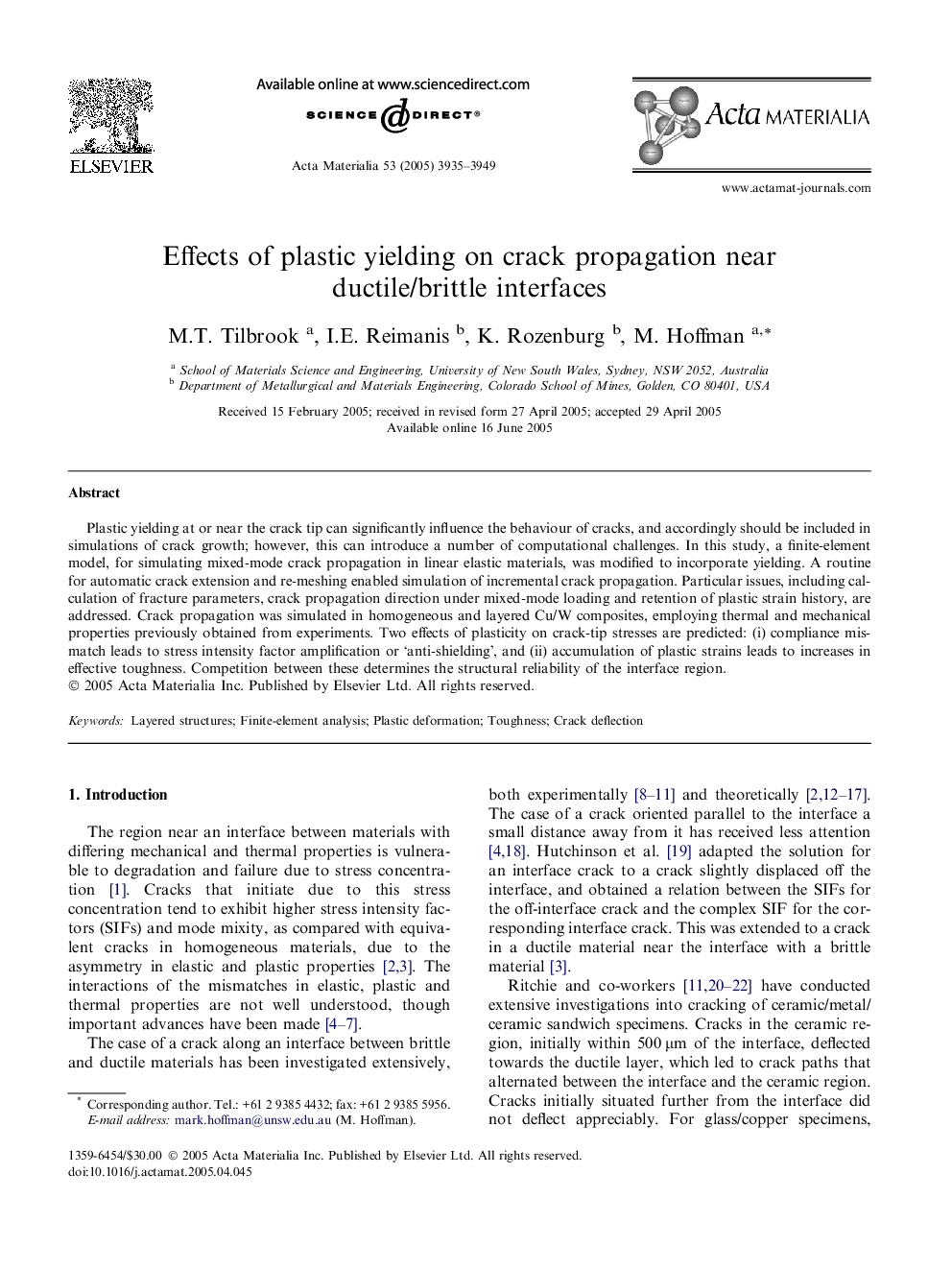| کد مقاله | کد نشریه | سال انتشار | مقاله انگلیسی | نسخه تمام متن |
|---|---|---|---|---|
| 1451228 | 988764 | 2005 | 15 صفحه PDF | دانلود رایگان |

Plastic yielding at or near the crack tip can significantly influence the behaviour of cracks, and accordingly should be included in simulations of crack growth; however, this can introduce a number of computational challenges. In this study, a finite-element model, for simulating mixed-mode crack propagation in linear elastic materials, was modified to incorporate yielding. A routine for automatic crack extension and re-meshing enabled simulation of incremental crack propagation. Particular issues, including calculation of fracture parameters, crack propagation direction under mixed-mode loading and retention of plastic strain history, are addressed. Crack propagation was simulated in homogeneous and layered Cu/W composites, employing thermal and mechanical properties previously obtained from experiments. Two effects of plasticity on crack-tip stresses are predicted: (i) compliance mismatch leads to stress intensity factor amplification or ‘anti-shielding’, and (ii) accumulation of plastic strains leads to increases in effective toughness. Competition between these determines the structural reliability of the interface region.
Journal: Acta Materialia - Volume 53, Issue 14, August 2005, Pages 3935–3949